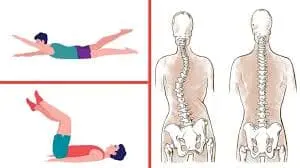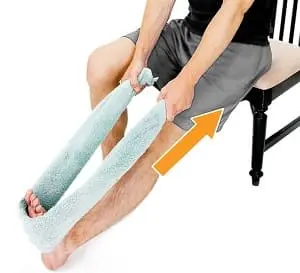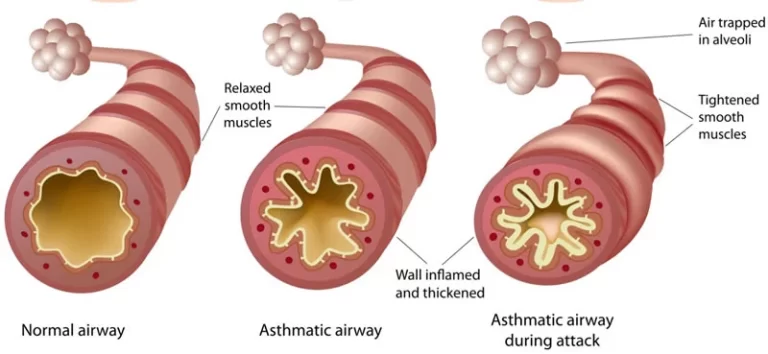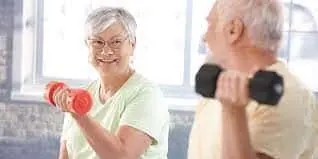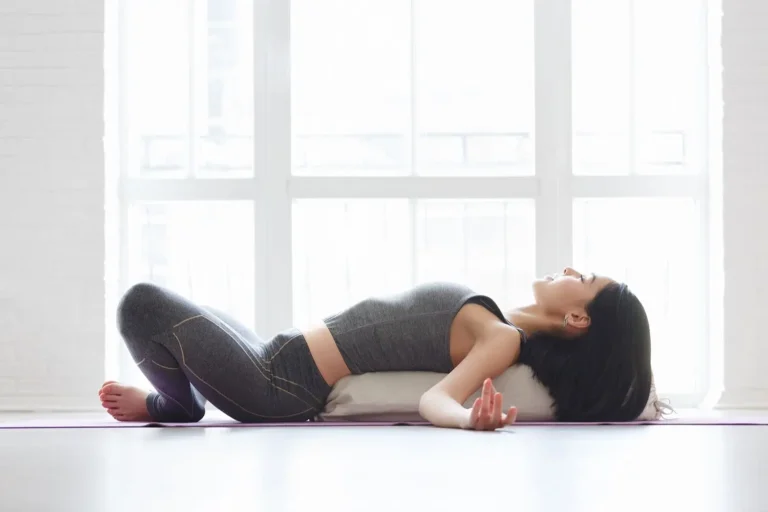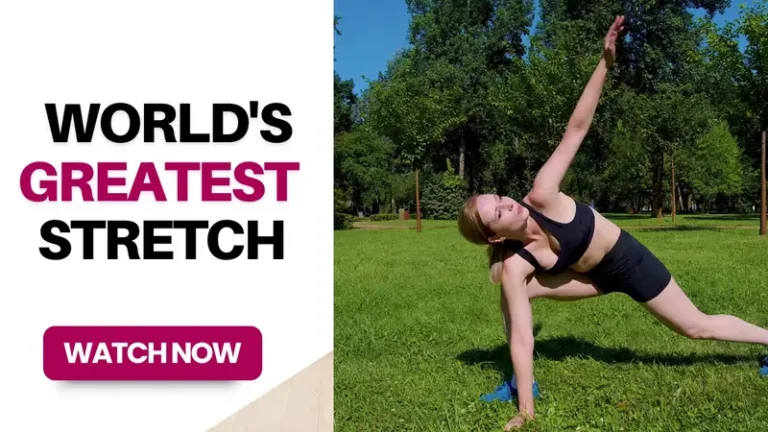13 Best Exercises for Scoliosis
What is scoliosis?
The lateral curvature of the spine is referred to as “scoliosis” in the medical field. Although the spine naturally curves in all people, the spine appears straight when viewed from behind. On the other hand, people with scoliosis have an uncommon S- or C-shaped curvature of the spine. The curve can appear at different locations along the spine and on each side.
A tiny, big, or medium angle can be present on the curve. Conversely, any X-ray measurement higher than 10 degrees is considered scoliosis.
The severity of scoliosis can range from minor to severe. Curves with mild scoliosis, often less than 10 degrees, don’t need to be treated. Severe scoliosis curves can lead to back issues, breathing difficulty, and pain.
Is it possible to treat scoliosis with exercise?
In addition to helping the spine move and maintain better posture, exercise can strengthen the muscles that support the spine.
Exercise may help with;
- Make the muscles surrounding your spine stronger.
- Improve flexibility and range of motion by strengthening the core muscles.
- Strengthen your limbs’ muscular power and balance.
- Minimize suffering and aches
- Improving your coordination and balance
Developing a customized exercise routine with a physical therapist or other medical expert is important for individuals with scoliosis. This is because the particular exercises that are most helpful will change according to the curve’s position, severity, and other variables.
Best Exercises for Scoliosis:
Pelvic tilt
For scoliosis, pelvic tilt exercises can be beneficial since they can improve posture, stretch out tense muscles, strengthen the hip and core muscles, and lessen pain.
- Place your feet level on the floor and bend your legs, and you should be on your back.
- Lift your hips and contract your abdominal muscles in order to push your lower back into the floor.
- Hold this position for a few seconds.
- Then return to your neutral position.
- Then relax.
- Repeat this exercise 5 to 10 times.
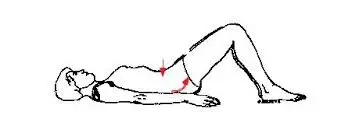
Cat-Cow Exercise
- Starting with a kneeling position on the ground.
- Maintain an elevated head and a tight abdomen while kneeling on the ground.
- Breathe deeply, round your back, raise your lower ribs, and let your neck loose.
- Exhaling, they should lower their chest and raise it slightly toward the floor.
- Pull in your stomach to get back.
- Then relax.
- Repeat this exercise 5 to 10 times.

Single leg balance
For scoliosis, single-leg balance exercises can be helpful because they can strengthen the muscles that support the spine while improving balance. Both pain relief and better posture may result from this.
- The initial position is standing.
- Maintain an open gaze while you flex one knee and stabilize with one foot.
- After that, grasp onto something like the back of a chair, table, or wall with your hands to maintain your balance.
- Once the balance is maintained, pull out the hand or set them aside.
- Then, to complete the challenge, fold your arms across your chest.
- Then return to your neutral position.
- Then relax.
- Repeat this exercise 5 to 10 times.
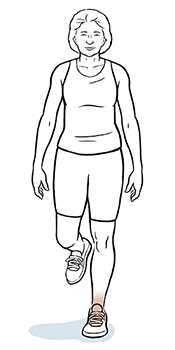
Latissimus dorsi stretch
- The first position is standing.
- You should stand in a neutral stance with your back straight.
- Keep your knees slightly bent and place your feet shoulder-width apart.
- After that, raise both hands and hold the right wrist with the left hand.
- When there is a stretch on the left side, lean the patient’s body slightly to the right).
- Take a breath or two while holding, then push back to the starting position with your left foot.
- Then relax.
- Repeat this exercise 5 to 10 times.
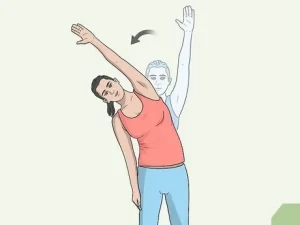
Seating Rotation Stretch
Your hips, shoulders, and spine can all become more flexible with regular use of the seated rotation stretch.
- Your back should be neutral as you sit in a chair with your feet flat on the ground.
- Keep your hips and legs pointing forward as you slightly rotate your body to the right.
- Hold this position for a few seconds.
- Then return to your neutral position.
- Then relax.
- Repeat this exercise 5 to 10 times.
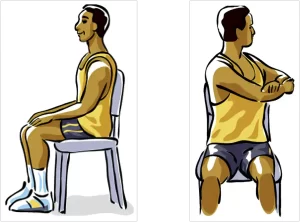
Bridge Pose
The hamstrings, glutes, and core can all be strengthened with a bridge posture. It might also help with chest expansion and breathing improvement.
- Lay flat on your back with your feet flat on the ground and your legs bent.
- By lifting your upper body off the floor, you may straighten your body from your shoulders to your knees.
- Hold this position for a few seconds.
- Then return to your neutral position.
- Then relax.
- Repeat this exercise 5 to 10 times.
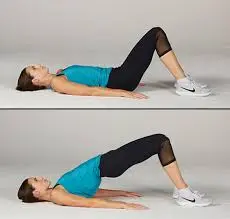
Child’s Pose
Stretching the neck and back might be beneficial when doing the child’s posture, which promotes relaxation.
- To do the child’s posture, bend down on the ground and place your legs hip-width apart.
- You lean forward while sitting back on your toes.
- Your forehead should rest on the ground.
- Lift your arms above your head and place your palms down.
- Hold this position for a few seconds.
- Then return to your neutral position.
- Then relax.
- Repeat this exercise 5 to 10 times.
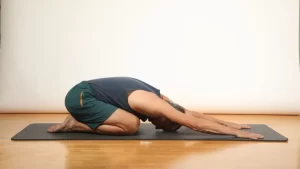
Downward Dog
- Lie down on your knees with your hands and knees together on the ground.
- Spread your fingers wide, apply pressure through your fingertips, curl your toes, and bring your hands slightly in front of your shoulders.
- Push your knees up and your hips back, then release the breath.
- With your legs slightly bent, lower your heels to the floor and press the backs of your thighs up against the wall behind you.
- Press down on the mats with the tips of your index fingers.
- Keep your head between your upper arms and adopt a relaxed posture.
- Take a breath here.
- With a breath out, drop to Child’s Pose by bending your knees.
- Then return to your neutral position.
- Then relax.
- Repeat this exercise 5 to 10 times.
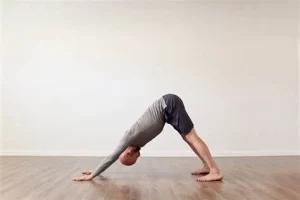
Side Plank
A difficult pose that might help build stronger side muscles for your spine is the side plank.
- With your shoulders packed over your elbows and your forearms on the ground, begin the Side Plank exercise.
- Extend your left arm above your head and rotate onto your right forearm.
- With your left foot on top of your right, raise your hips off the ground.
- Make an even line from your head to your heels.
- Hold this position for a few seconds.
- Then return to your neutral position.
- Then relax.
- Repeat this exercise 5 to 10 times.
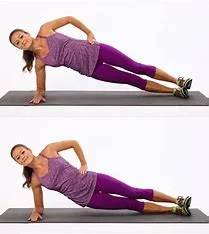
Tadasana
- Make sure both of your feet are equally weighted while you stand with your feet slightly apart.
- Breathe in deeply, raise your arms above your head, and hold your fingers together with the palms facing upward.
- While you breathe out, stretch your shoulders toward your ears and roll them back down your spine to align your posture and open your chest.
- Hold this position for a few seconds.
- Then return to your neutral position.
- Then relax.
- Repeat this exercise 5 to 10 times.
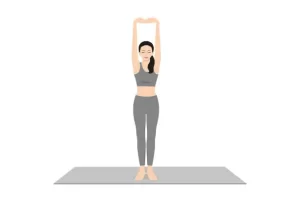
Double-Leg Abdominal Press
An exercise that works the core muscles, such as the rectus abdominis (abs), transverse abdominis (deep core muscles), and obliques, is the double-leg abdominal press. It’s a very simple exercise, but it can be challenging to maintain proper form.
- The starting position is supine on the floor.
- Now bend your both knees.
- Your hands resting on your knees.
- By raising your belly button toward your spine, you can activate your core muscles.
- Raise your legs off the floor so that your knees are 90 degrees apart.
- Keep your core engaged as you bring your knees up to your chest and press your hands against them.
- Hold for a few seconds, then slowly bring your legs back to the starting position.
- Then relax.
- Repeat this exercise 5 to 10 times.

Bird dog
bird dog exercise works your shoulders, hips, and core well. Although it’s a demanding exercise, you can adjust it to make it easier or harder.
- Kneel on all fours with your hands and knees hip-width apart to begin in the tabletop posture.
- Placing your knees under your hips and your wrists under your shoulders, maintain a flat back.
- To activate your core, bring your belly button in close to your spine.
- Take your left knee off the mat and raise your right hand.
- Keep your balance while you straighten your arm in front of you and your leg behind you.
- Make an effort to move thoughtfully and slowly.
- After a short period of holding, return your arm and leg to the starting position.
- Then relax.
- Repeat this exercise 5 to 10 times.
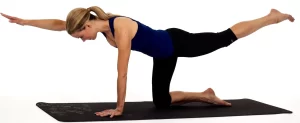
Superman
- Facing front, place your face on the floor.
- Place their fists or palms on the ground and extend their arms straight over their heads.
- Keep both legs working in a straight line.
- Lift both of their limbs off the ground.
- After taking a deep breath, let go and return their arms and legs.
- Then relax.
- Repeat this exercise 5 to 10 times.
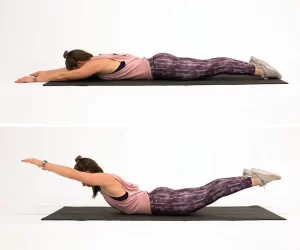
When doing physical activity, what safety precautions should be taken?
- Maintain proper posture during the exercise.
- Stay away from strenuous physical activity.
- If an unexpected pain develops, quit working out.
- Between each set of exercises, take a rest.
- When working out, wear loose clothing to allow for maximum movement.
- If your muscles feel stiff, stretch them, but never in a way that is too painful.
Scoliosis postural adjustment:
In the management of scoliosis, postural adjustment is important.
People with scoliosis may find that their discomfort and muscle tension are lessened with good posture. In addition to reducing the risk of developing new problems, it may facilitate breathing and circulation.
Proper sleeping posture:
- When you lie on your side or back to sleep, keep your spine in a neutral stance.
- Place a pillow between your knees when lying on your back to maintain the natural bend of your spine.
- If you sleep on your side, place a pillow between your knees to maintain the correct position of your hips and spine.
Proper sitting posture:
- Select a chair with supportive lumbar support.
- Place your feet firmly on the ground and bend your knees to form a 90° angle.
- Maintain a straight back and relaxed shoulders.
- keep your head centered over your spine and pull your chin in slightly.
- Close your core muscles to bring your belly button closer to your spine.
- Do not cross your legs.
Proper standing posture:
- Aim for an even distribution of weight while standing with your feet shoulder-width apart.
- Maintain a straight back and relaxed shoulders.
- Pull your chin in and slightly extend your head ahead of your spine.
- Bring your belly button closer to your spine by tensing your abdominal muscles.
- Place your ankles under your knees and keep a slight bend in your knees.
The following advice can help you keep proper posture all day long;
- Keep an eye on your posture and make any required adjustments.
- Take breaks if you are standing or sitting still for extended periods.
- Exercise regularly to strengthen your core.
- For individualized guidance on posture and exercise, consult a physical therapist or other medical expert.
It’s vital to remember that scoliosis sufferers can always find it challenging to keep an ideal posture. This can be due to an abnormal curvature of the spine. However, those with scoliosis can lessen the pain and discomfort that comes with it by using the above advice to correct their posture.
FAQs
Is it possible to treat scoliosis with exercise?
For kids and teenagers with scoliosis, exercise is especially crucial since it can stop the curvature from getting worse. However, adults with scoliosis can also benefit from exercise.
Is yoga used to cure scoliosis?
Yes, scoliosis can be treated with yoga. Yoga helps manage scoliosis symptoms while improving general health. yoga positions could be beneficial. Increased spine range of motion and flexibility can help in the reduction of pain and stiffness.
Is scoliosis improved through walking?
Indeed, for those with scoliosis, walking is a beneficial type of exercise. An activity that is easy on the spine and joints is walking, which has little effect. It is also an effective means of enhancing cardiovascular health, building muscle, and reducing body weight.
How may the severity of scoliosis be avoided?
Even while there are treatments that can help slow down or stop development, there is no certain way to stop scoliosis from getting worse. The form of scoliosis the patient has and how severe the curvature is will all affect the best course of treatment.
How can someone with scoliosis sleep?
When it comes to scoliosis, doctors usually recommend sleeping on your back. If you have always slept better on your back or would like to try it, you can make yourself more comfortable by positioning your pillow. Lay a small pillow under your neck to prevent flexion of the neck from raising your head too high.
Is scoliosis improved by stair climbing?
Patients are therefore better able to keep their alignment when going about their daily tasks. To improve general posture and lower the chance of scoliosis advancement, this activity of daily living can range from sitting down to upward stairs or taking a shower.
With scoliosis, which muscle is weak?
The odd spinal curve that bends to the right, away from the heart, in the majority of typical cases of scoliosis causes the right side of the spine’s muscles to work harder and may lead to overuse strains in those muscles. The left side’s muscles gradually become smaller, tighter, and weaker as a result.
References:
- Z. Ashpari (2023) May 9. You can perform workouts for scoliosis at home. We line. at-home exercises for scoliosis on https://www.healthline.com
- Nalda, T., and T. Nalda (2022b). Yoga poses that can help with scoliosis as well as ones to avoid. Reduction Center for Scoliosis. The Scoliosis Reduction Center’s blog post on yoga for scoliosis
- October 1, 2021: Kaput, K. When practicing yoga with scoliosis, keep this in mind. Cleveland Clinic. The Cleveland Clinic’s website offers yoga poses for scoliosis.
- On December 13, 2023b, Goriya, D. Improve Your Posture with These 21 Greatest Scoliosis Exercises. Mobile Clinic for Physiotherapy. 21 Best Scoliosis Exercises: https://mobilephysiotherapyclinic.in/
- Image 4, March 1st, 2023b, Morris, M. WikiHow. Four Techniques to Extend Your Latissimus Dorsi. Find out how to stretch your latissimus dorsi on wikihow.com.
- Image 10, Bochkov, D., Time, A., Sudowoodo, Benjavisa, Benjavisa, Tolcheva, Z., illustrative Arvitalya, Comotomo, V. Dmyrtiieva, C. O. I. A. Time, a., a., a., Comotomo, benejavisa, benejavisa, Bochkov, d.,… Bochkov, d. (n.d.). 32,400+ Tadasana Vector Images, Royalty-Free Clip Art & Illustrations – iStock. the illustration of Tadasana at https://www.istockphoto.com/
- Image 11, (2024, May 10). Admin. The Top Ten Scoliosis Stretching Exercises. Exercises for stretching scoliosis that are among the top ten

